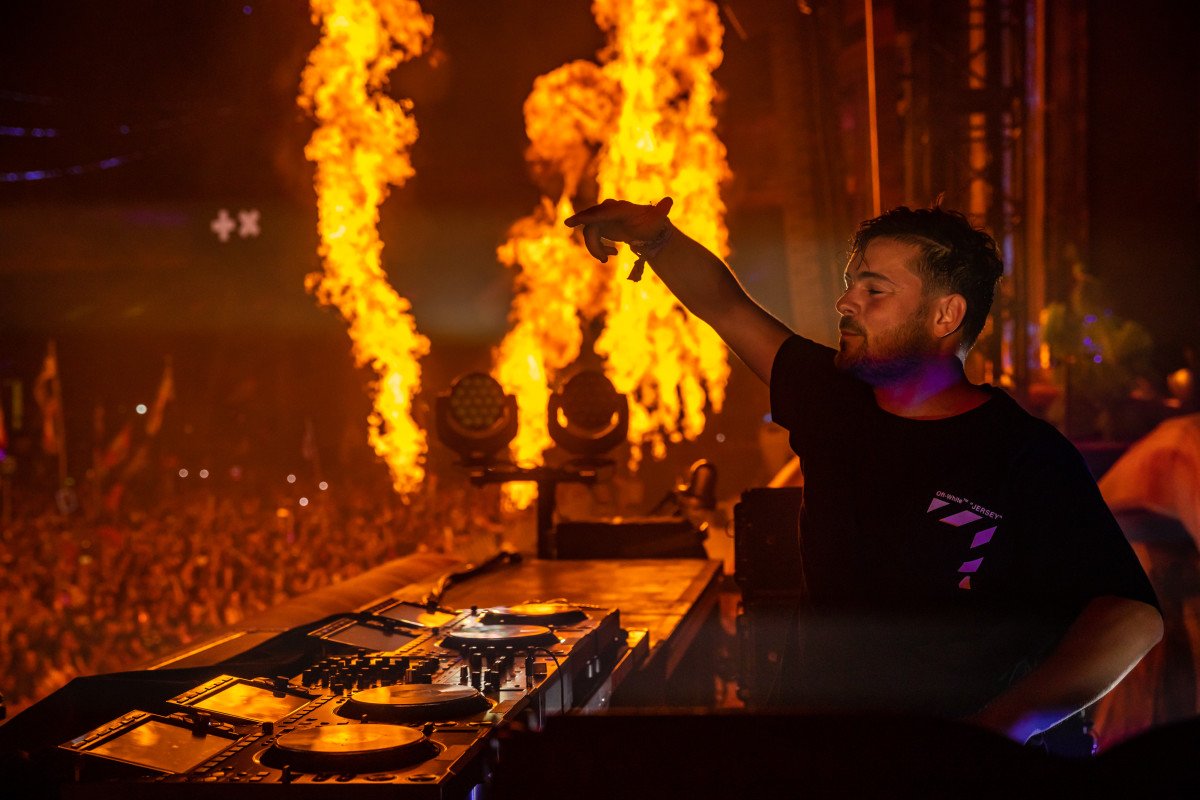-
Could DSPs Follow Hinge’s Lead & Build Out Payment Processing Bypassing Apple?
Photo Credit: Hinge Hinge’s CEO Justin McLeod recently announced plans for the dating app to introduce its own payment processing system outside the Apple App Store. The rationale: by circumventing Apple’s 30% commission on in-app purchases, Hinge can reduce costs and potentially pass those savings on to consumers. This announcement comes amid a broader industry debate about platform fees and the power of app store gatekeepers. According to a recent survey of iOS users, many consumers would need a substantial discount—as much as 20%—to be convinced to use a payment method outside the App Store’s environment. This highlights a significant challenge for Hinge and other apps looking to take control of their own financial transactions. Hinge’s move is more than just a business decision, it’s also a potential blueprint for massive changes in the relationship between apps and users. If Hinge and parent company Match Group successfully implement and popularize their own payment processing, it’s not that hard to imagine streaming services like Amazon Music, Tidal, and Deezer following suit. Spotify in particular has long chafed at Apple’s service fees and the prospect of keeping more of the revenue by handling payments themselves has already moved forward. Heading down this road isn’t without obstacles though—Hinge will need to prove the model is successful before more DSPs are likely to jump on board. Consumer trust is a major concern, with Apple’s App Store widely regarded as a secure and reliable payment platform that makes it easy to cancel unwanted subscriptions. Many users are reluctant to share their financial information directly with individual apps and services. And even if Hinge is successful with its payment processing roll out, it will still have to offer App Store payments to remain compliant with iOS developer requirements. Spotify has already tested the waters by informing iOS users that they can subscribe outside of the App Store. If consumers respond positively—which Spotify says they have—it could be the shift of tides for other DSPs to follow suit. Spotify’s new iOS experience allows users to see the full subscription pricing and promotions in the app, with a single tap directing them outside of the App Store. As of now, Spotify is the only major music streaming service that has publicly updated its iOS app to include direct links to subscription payments following the Epic v. Apple ruling. Other platforms like Tidal, Deezer, and Amazon Music could quickly follow suit for better control over pricing and user billing—especially if Hinge is successful with this payment processing experiment. View the full article
-
Martin Garrix Set to Make U.S. Debut as YTRAM Alias After Nearly a Decade
Martin Garrix's enigmatic alter ego, YTRAM, is stepping into the spotlight on American soil for the very first time, Insomniac Events has confirmed to EDM.com. The alias, a reversed spelling of "Marty," first emerged onstage at Tomorrowland back in 2017, cloaked behind a mask. What began as a one-off surprise is now starting a new chapter stateside, with YTRAM slated to make his long-awaited U.S. debut Sunday, June 29th, the final night of Garrix's three-day headlining run at Los Angeles State Historic Park. The weekender, produced by Insomniac, is scheduled for June 27-29. YTRAM's sonic ethos is built on a foundation of tech and deep house. In the years that followed the project's premiere at Tomorrowland, YTRAM releases were few but focused, including standout collaborations in 2020 with Bleu Clair ("Make You Mine") and Elderbrook ("Fire"). Live performances from YTRAM have remained extremely rare, so the news of his U.S. debut is particularly notable. The evening's lineup is rounded out with performances by DJ Ruckus, Lavern, Tchami and a headlining set by Garrix. You can purchase tickets to the show at Los Angeles State Historic Park here. c/o Martin Garrix Follow Martin Garrix:X: x.com/martingarrix Instagram: instagram.com/martingarrix TikTok: tiktok.com/@martingarrix Facebook: facebook.com/martin.garrix Spotify: spoti.fi/2YszVxQ
-
Sara Landry Breaks Club Space Streaming Record With 8-Hour DJ Set: Watch
Picture this: You're at Club Space, it's 3am and Sara Landry is just hitting her stride. Seven hours later, the "high priestess of hard techno" is still behind the decks, and somehow you're still standing as she's breaking records. Landry on May 27th delivered the longest streamed performance in the history of the iconic Miami club, her publicity team has confirmed to EDM.com. The techno superstar and EDM.com Class of 2024 inductee performed for nearly eight hours until 11am, ultimately securing the longest DJ set ever recorded at the venue. The performance speaks to techno's unique power to suspend time itself, and the genre's tendency to demand commitment from its crowds. In an era of TikTok attention spans, watching thousands of people commit to an eight-hour marathon set from Landry feels genuinely subversive. The Spiritual Driveby producer called the night an "unforgettable throw down" at the time. You can watch her full performance at Club Space below. Follow Sara Landry:X: x.com/saralandrydj Instagram: instagram.com/saralandrydj TikTok: tiktok.com/@saralandrydj Facebook: facebook.com/saralandrydj Spotify: spoti.fi/3RKgqwu
-
Artist Publishing Group and Others Settle Social Media Infringement Actions Filed Against Over a Dozen NBA Teams
Artist Publishing Group and others have settled the social-focused copyright infringement lawsuits they filed against more than a dozen NBA teams. Photo Credit: Markus Spiske After almost one year of litigation, music publishers including Kobalt, Artist Publishing Group, and Prescription Songs have settled the copyright infringement actions they filed against 14 NBA teams. We last checked in on the substantially similar courtroom confrontations, all centering on the allegedly unauthorized use of protected works in social media videos, closer to 2025’s beginning. Subsequently, February saw the coordinated cases enter mediation, which evidently laid the groundwork for settlements. Regarding the exact timing at hand, the action against the Atlanta Hawks trended a bit ahead of schedule and settled outright that same month. However, it wasn’t until April that the appropriate parties jointly moved to dismiss the Minnesota Timberwolves suit, and it was only last Thursday that the publisher litigants and the Phoenix Suns formally told the court that “all claims between them have been resolved.” Of course, we don’t know exactly what the settlements entail. But as social platforms’ licenses cover personal, not commercial, use, one needn’t stretch the imagination to guess the resolutions’ general terms. (Side note: The NBA itself has been on something of a licensing kick as of late, including a high-profile playoffs campaign in April and a more recent promo featuring a then-unreleased effort from Lil Wayne and Bono.) To be sure, NBA teams are hardly alone in settling copyright complaints levied by music rightsholders over allegedly unauthorized usages on Instagram, TikTok, and/or different platforms. During the past year, Chili’s parent Brinker, several American Hockey League teams, and Marriott alike have put related actions to rest. Keeping that point front of mind, social-infringement suits have continued to arrive during 2025. Sony Music sued the University of Southern California in March, for instance, before Warner Music started litigating against Crumbl Cookies in April. Then, May saw the latter major slap Designer Shoe Warehouse with a separate suit yet for allegedly infringing on hundreds of recordings and compositions. Today, the presiding judge in the DSW showdown set a July 2026 discovery cutoff and (assuming a deal doesn’t materialize in the interim) mediation session. Additionally, the court today granted an extension (until July 10th) for Sony Music to formally respond to USC’s dismissal motion. Meanwhile, Crumbl now has until June 30th to provide an answer. In the bigger picture, June has also brought rumblings of possible settlements in publishers’ infringement complaint against X as well as the majors’ copyright suits against Suno and Udio. View the full article
-
Breakaway Festival Returning to Las Vegas for Three-Day Wynn Nightlife Takeover
Las Vegas might not be short on parties, but few move with the ambition of Breakaway Music Festival. It's no surprise that Breakaway, the nation's largest touring EDM event, is bringing the action back to Vegas for round two of its series in the city. Partnering with Wynn Nightlife in late-August, the festival will once again embed itself in the opulent corridors of XS Nightclub and Encore Beach Club. The lineup features a medley of Wynn Nightlife resident artists and superstar DJs alike. Taking place from August 22-24, the festivities will be soundtracked by The Chainsmokers, Diplo, Marshmello, DJ Diesel, Two Friends, Bob Moses and EDM.com Class of 2022 star ACRAZE, among others. The announcement comes at a high watermark for Breakaway amid a meteoric trajectory over the last couple of years. In 2025 alone, the brand has launched festivals in multiple new cities including Dallas, Phoenix, Atlanta, Philadelphia, Huntsville and an upcoming addition in Northern California. The ongoing expansion brings its national footprint to a dozen festivals. Tickets to Breakaway's upcoming events with Wynn Nightlife are on sale now. Check out the full lineup and schedule below. c/o Breakaway
-
Angello Drops “Echo” – A Raw Fusion of Rave Vibes and Club Energy
Los Angeles-based DJ and producer Angello is back with a powerful new release titled “Echo,” a track that captures the essence of late-night euphoria with an emotional pulse running through every beat. Crafted with a deliberate blend of rave aesthetics and club-ready momentum, Echo showcases Angello’s ability to channel raw energy into a sound that feels both instinctive and alive. “I didn’t overthink it,” Angello explains. “I built this track based on emotion and the energy I felt in the moment. I wanted something that hit hard but also flowed naturally—and that’s what Echo became.” From the hypnotic build-up to the drop that’s tailor-made for peak-time dance floors, Echo is more than just a banger—it’s a sonic experience designed to connect deeply with listeners while keeping them moving. As Angello continues to carve his sound from the vibrant LA underground to the global dance scene, Echo is a strong testament to his evolution as a producer and performer. Whether you’re tuning in for inspiration or to get hyped for the night, Echo deserves a spot on your radar. Listen to Angello – “Echo” now on all streaming platforms. here Follow Angello on Instagram The post Angello Drops “Echo” – A Raw Fusion of Rave Vibes and Club Energy appeared first on EDMNOMAD. View the full article
-
Remember That OpenAI & Jony Ive Partnership? A New Trademark Dispute Made OpenAI Scrub It From Its Website
Photo Credit: OpenAI OpenAI recently removed all mentions of its partnership with Jony Ive’s new hardware startup io from its website and social media channels. The move comes after a federal court order related to a trademark dispute with IYO, a startup specialized in AI-powered hearing devices. The dispute centers on the use of the name io, which IYO claims is too similar to its own branding and could confuse consumers. As a result, OpenAI has temporarily removed references to its official blog post and nine-minute promotional video featuring Ive and OpenAI CEO Sam Altman. The removal has prompted speculation that the partnership itself collapsed—but OpenAI has clarified that the deal remains intact. OpenAI clarified that the content was removed due to a court order following a trademark complaint from IYO regarding the ‘io’ name. The company expressed disagreement with the complaint and is currently reviewing its legal options. Jony Ive’s spokesperson also pushed back, calling the lawsuit utterly baseless and vowing to fight it vigorously. Despite the legal setback, both sides confirm the partnership is still on and that Ive’s team will integrate OpenAI’s research and engineering groups. The original announcement positioned io Products as a key part of OpenAI’s strategy to build consumer AI hardware. The partnership was valued at nearly $6.5 billion and was unveiled in late May 2025. The promotional materials highlighted plans for a screenless AI companion device, leveraging voice and image capabilities to interact with environments. That product concept sounds similar to the Humane AI pin, which cost $700 and was only operational for about a year before the concept was shuttered and all AI devices ‘bricked’—or rendered non-functional. HP bought the remains of that AI company for around $116 million. This trademark dispute arose after the initial announcement, with IYO filing a lawsuit and a judge issuing a restraining order against OpenAI. U.S. District Judge Trina Thompson found that IYO’s trademark infringement case was strong enough to proceed to a hearing in October 2025. Until then, OpenAI cannot use the ‘io’ name on any branding, marketing, or promo materials. It’s unclear how successful the trademark dispute will be, considering the i/o abbreviation is shorthand for input/output in the tech world. Google’s annual developer conference—Google I/O—makes reference to this shorthand. (It’s also the name of the third largest moon of Jupiter, named after one of Zeus’ mortal lovers.) So while OpenAI is forbidden from using the name until the hearing in October, this partnership will continue. For now, the focus is on product development and integration, with branding issues set aside until this legal issue is cleared up. View the full article
-
Eric Prydz Announces HOLOSPHERE 2.0 Documentary Series
The sneak peek of the year is here! Dance music legend Eric Prydz’s HOLOSPHERE 2.0 has been garnering all the rave reviews ever since its introduction in June. Growing in stature with each passing show, the curiosity behind the scenes was palpable. Come Wednesday, a 3-part documentary will go behind the scenes of this epic production. This SHOW, THE TECHNOLOGY AND THE size of it that’s never been done before – ever ERIC prydz HOLOSPHERE 2.0 significantly marked the return of the famed ‘Sphere’ that had a solo appearance at the first weekend of Tomorrowland 2019 (billed as EPIC 6.0 – HOLOSPHERE). That single appearance was enough to make its mark. Revellers back then had vouched to witness a visual spectacle unlike anything seen before. The demand to bring it back has been lingering ever since, with the wishes finally fulfilled 6 years later. The newly opened UNVRS in Ibiza, officially the world’s largest nightclub, is the hub of the show every Monday to add to the delight—the HOLOSPHERE 2.0 residency runs till September. The announced documentary reminds us of the rollout of Holosphere 1.0. Back then, The Verge was able to take a deep dive with Eric and learn all about the amazing feat in building the massive structure. A similar insight is in the works for HOLOSPHERE 2.0, which will help uncover what goes behind carving out the experience. It’s an experience that is both bewildering and memorable at the same time. Stay tuned for more! The post Eric Prydz Announces HOLOSPHERE 2.0 Documentary Series appeared first on EDMTunes.
-
NMPA Head David Israelite Says U.S. Publishing Revenue Cracked $7 Billion in 2024, Calls for Labels ‘To Stand With Non-Performing Songwriters Whenever and Wherever They Strike’
National Music Publishers’ Association head David Israelite. Photo Credit: NMPA U.S. music publishing revenue grew by double digits during 2024 to crack $7 billion, per the NMPA, which says it’s time for labels and artists “to stand with non-performing songwriters whenever and wherever they strike.” The figure and the quote come from a speech delivered by National Music Publishers’ Association (NMPA) president and CEO David Israelite during his organization’s recent annual meeting. Per the longtime NMPA head, stateside publishing revenue came in at $7.04 billion in 2024, up 13.41% from 2023 for the 10th consecutive year of double-digit growth. That is, of course, despite the well-documented fiscal fallout of Spotify’s bundling craze; the NMPA has pointed to a $230 million single-year hit for songwriters and publishers as a result of the much-criticized maneuver. Back to the 2024 data, Israelite also attributed 26.74% of total revenue to sources that hadn’t previously been paying for licensing. “We fought, we won, and now nearly $2 billion of our revenue last year came from these sources,” he said. Meanwhile, the gap between stateside recording ($11.3 billion in 2024) and publishing ($7.04 billion) revenue is said to have closed significantly since 2014. “This incredible growth story is in spite of the fact that 72% of our revenue is under oppressive government price controls, which have denied songwriters and music publishers the true value of their intellectual property,” he indicated. Elsewhere in his remarks, the NMPA president disclosed members’ 2024 return on dues paid (458%), emphasized the industry’s growing recognition of songwriter achievements, and reiterated the long-term impact of the Mechanical Licensing Collective. “By the end of the next CRB period in 2032,” he specified, “songwriters and music publishers will have saved $2 billion from the zero-commission mandate in the MMA. And those savings will only increase.” Beyond these hard numbers, Israelite concluded by drawing attention to the “unique problem” of songwriters failing to “stick together” in the licensing arena. Chalking up the reality in part to the “different lens” through which songwriter-artists see things, the NMPA CEO noted the issue’s impact on the comparatively small subset of free-market rates. This impact ultimately affects government-controlled rates as well, he explained in more words. “Those who are fighting for fair songwriter rates are sometimes attacked by some of the very songwriters they are trying to help,” Israelite spelled out. “And that’s because some of those songwriters are also recording artists who view these platforms through a different lens. And this dynamic can cause us to crumble from within.” “I am calling on recording artists, managers, and record labels to stand with non-performing songwriters whenever and wherever they strike. … There is an opportunity to make a meaningful difference in songwriter income if we all stand together. And all of us need to do a better job articulating why we are in these disputes so that songwriters are armed with the information they need to help themselves,” he proceeded. View the full article
-
SoundCloud Re-Inks with SiriusXM-Owned AdsWizz
Photo Credit: apphunters.io SoundCloud renews its agreement with AdsWizz to expand its audio advertising inventory to 14 European markets. SoundCloud and AdsWizz have announced the renewal of their long-standing exclusive agreement with SiriusXM-owned AdsWizz to sell SoundCloud’s audio advertising in 14 European markets. These include Germany, France, Netherlands, Belgium, Ireland, Italy, Sweden, Denmark, Spain, Switzerland, Austria, Portugal, Finland, and Norway. Through 2025, AdsWizz and its regional sales representatives will serve as the exclusive audio sales representative for advertisers seeking to reach SoundCloud’s highly engaged and diverse audience. AdsWizz also has additional non-exclusive access to SoundCloud’s video and display inventory. The renewed advertising relationship, dating back to 2021, will give buyers continued access to SoundCloud’s growing European audience and premium audio inventory. The agreement continues to leverage AdsWizz’s technology, including its programmatic marketplace and ad-tech solutions. SoundCloud’s inventory has more than doubled since 2021, giving advertisers increased access to SoundCloud’s global community of over 50 million global users and 20 million creators. SoundCloud has also adopted new AdsWizz targeting solutions that will improve its advertising capabilities, such as mood targeting, which enhances ad relevance by allowing advertisers to match audio campaigns with a targetable “music mood.” “We’re thrilled to extend our exclusive agreement and continue connecting advertisers with SoundCloud’s growing and passionate global audience of creators and music fans,” said Paul Brown, VP, European Business & Operations at AdsWizz. “This is a major opportunity for brands to reach new, engaged, and diverse audiences in Europe, while leveraging our contextual targeting, measurement, and ad tech capabilities.” “Renewing our deal with AdsWizz reflects SoundCloud’s continued investment in the growth of our ad-supported business across Europe,” said Jonathan Kopitko, Senior Director, Global Partnerships at SoundCloud. “As our global community of artists and fans expands, this collaboration ensures we’re delivering meaningful opportunities for advertisers to connect with engaged, culturally relevant audiences—powered by innovative technology that enhances both targeting and reach.” Advertisers can access SoundCloud’s audio ad inventory through major DSPs, including AdsWizz’s DSP, AudioMatic, as well as through direct insertion orders or the AdsWizz Marketplace. SiriusXM’s combined sales group, SiriusXM Media, will continue to serve as the exclusive advertising representative for SoundCloud in the U.S. through 2025. View the full article
-
Following Apple, Spotify Appears to Be Working on a Music Import Tool
Photo Credit: emojisprout Spotify is set to make music streaming more accessible for users looking to switch platforms—a move to address flatlining subscription numbers in the US. A recent APK teardown has revealed references to a new ‘import music’ tool, with Spotify following Apple’s lead yet again. Android Authority found reference strings in an Android APK teardown that appear to show how Spotify will allow users to migrate playlists and tracks from other services directly to Spotify. Switching to Spotify from another service usually means rebuilding playlists manually or paying to use third-party tools. Now it appears as though Spotify is set to make the transition easier on potential new customers. The code suggests the import function will live in the ‘Your Library’ tab of the app. A message in the interface notes that an internet connection is required for importing. The exact mechanism for importing music remains unclear—though playlist migration is a top user request. Spotify already supports local audio file recognition, so this tool is specifically built for cross-platform migration from other digital service providers (DSPs). The feature is still in development, with no confirmed release date yet. APK teardowns typically only provide hints about future releases—references to Spotify’s still missing HiFi tier were discovered years ago. Spotify is once again playing catch-up with Apple Music, which launched a similar music import tool that allows users to migrate away from Spotify or YouTube Music to Apple Music. The Apple Music tool integrates a third-party tool called SongShift, one of the paid music migration tools. Apple Music users do not need to pay to migrate and they can do so by using the Apple Music app on iPhone, iPad, Android, and the web. The introduction of these features highlights how DSPs are aiming to reduce friction for users looking to switch platforms. Music subscription growth in the United States has reached a peak, so DSPs are fighting to retain users and keep them from going elsewhere. Apple’s introduction of spatial audio at no extra cost has left many users interested in migrating their playlists—especially since Android support for Apple Music has grown in the last few years. View the full article
-
[Event Review] Palm Tree Music Festival Lights Up The Hamptons For Best Edition Yet
Palm Tree Music Festival has become a staple in the Hamptons during the summer. Some of the biggest dance artists have graced Long Island with a fun day under the sun. This year had one of its best lineups yet, including Fisher, Kygo, Mau P, Blond:ish, Coco + Breezy, Tinx & Lucas, Benjamin Llyod, and Beau Cruz. Taking place at the Shinnecock Reservation in Southampton, it is a beautiful location for a festival. There is more than enough space for fun and dancing. The Hamptons represent a special place for the Palm Tree Crew; it is of course, where it all began in 2021. It is the perfect tropical location for the brand, and a special day awaited everyone. I can’t wait for this festival to return once again. The Venue Sequestered in a landscape of trees, the Shinnecock Reservation Native American reservation for members of the Shinnecock Indian Nation. They are gracious enough to allow Kygo and his crew to take over the lands for a day of dance paradise. The festival was the perfect level of crowded. Just enough to dance the night away with strangers, but not too many where you couldn’t walk around. I found it super easy to leave my dance spot to go get drinks or food and come back to the exact same spot. The bathrooms were also super clean and I never had to wait more than a few minutes. All tickets came with complimentary drinks and alcohol. It was so nice not to have to pull out your wallet unless you were getting food. We got to enjoy premium craft cocktails from Tequila Don Julio, sipped on Celsius Essential Energy drinks, and took a moment to refresh with perfectly chilled Sauvignon Blanc and wine coolers from Matua. SipMARGS was also a new addition to the fest, and I was a big fan of their five refreshing flavors. Kygo, Fisher, and The Support Fisher, Kygo, Mau P, Blond:ish, Coco + Breezy, Tinx & Lucas, Benjamin Llyod, and Beau Cruz all brought their A-game to the festival. The daytime had all the electric sounds to get people pumped for the big acts to follow. Blond:ish really set the energy for the day with her grooving and driving house. Mau P brought his infectious energy with tracks like ‘The Less I Know The Better’, ‘Gimme That Bounce’, and of course ‘Drugs From Amsterdam’. The Hamptons crowd was very excited for him to grace the stage. As one of the hottest acts in dance, any chance to see him is an experience. Fisher played the elusive sunset slot and was my personal favorite of the day. His mix of harder tech house tunes and love grooves really set the vibe of the night. ‘Atmosphere’, ‘Take It Off’, and the mega-hit ‘World, Hold On’ all had the crowd moving and singing. The fireworks show during ‘It’s That Time’ left everyone in awe. Kygo closed out the night in incredible style. The Norwegian always has something new in store. The King of Tropical House brought out a bunch of special guests, including Justin Jesso. He played ‘Higher Love’, ‘Stole The Show’, and ‘Born To Be Yours’. Kygo closed his set in special fashion with a beautiful rendition of ‘Firestone.’ He brought out live strings and violinists, and it was as peak of an experience as you can get. He closed the festival with one of his “personal favorites,” ‘Freeze’. This festival is the perfect way to kick off Summer in New York. I can see it in the future, adding more stages and expanding the grounds to accommodate even more people. It has been a pleasure seeing it grow. The post [Event Review] Palm Tree Music Festival Lights Up The Hamptons For Best Edition Yet appeared first on EDMTunes.
-
Tomorrowland Announces Global Journey Contest
Tomorrowland, the world’s largest and most immersive electronic dance music festival is now giving you the chance to dive headfirst into this world with an ultimate all-in adventure, the Global Journey package. This isn’t just a festival ticket; it’s a passport to a once-in-a-lifetime experience. The Global Journey package offers a 10-day experience from July 13th to July 22nd, transporting you from the sun-soaked shores of Ibiza to the vibrant cityscape of Brussels, culminating in the heart of the magical fairytale that is Tomorrowland. This journey is meticulously curated and designed to create unforgettable moments and connections with fellow music enthusiasts from all over the world. But this isn’t just about the music. It’s about the journey, the adventure, the stories you’ll tell and the friendships you’ll forge. So, strap in, ravers, EDM fans, and DJs, pack your bags, and get ready for an adventure like no other. We’re about to dive into the details. The Ibiza Kickoff: Discover Europe (July 13 – 16) Start the Party in Paradise What better way to start your Tomorrowland adventure than on the magical island of Ibiza? Known as the party capital of the world, Ibiza is the perfect playground for EDM fans. The Discover Europe experience (included in the Global Journey package) takes you on a 4-day escapade in this Mediterranean paradise. Expect exciting club nights, beach parties, and a chance to explore the island’s natural beauty. It’s the perfect warm-up for the musical marathon that awaits you. But this isn’t just about the parties. It’s about immersing yourself in a different culture, tasting new cuisines, and making new friends. It’s about the thrill of adventure and the joy of discovery. So, make sure to pack your dancing shoes, but don’t forget your explorer’s hat! After four unforgettable days in Ibiza, it’s time to take to the skies for the next leg of your journey. Legendary Party Flight (July 16) Ever been to a party in the sky? Well, buckle up because the party flight from Ibiza to Brussels is an experience you won’t forget. With live DJ sets and an atmosphere filled with anticipation and excitement, this is no ordinary flight. It’s a transition, a bridge between the sun-kissed beaches of Ibiza and the vibrant cityscape of Brussels. And trust us, it’s a journey you’ll remember. Belgian Journey: Brussels and Tomorrowland (July 16 – 22) Grand Place Brussels New Theme Hotel Package in Brussels (July 16 – 22) Once you touch down in Brussels, the second part of your journey begins. Your accommodation in Brussels is not just a hotel room; it’s an extension of the Tomorrowland experience. The new theme hotel package adds another layer of magic to your adventure. Expect state-of-the-art facilities, comfortable accommodations, and special surprises, all designed with the Tomorrowland theme in mind. It’s the perfect oasis to rest and recharge before the main event. The Full Belgian Journey Experience (July 17) But there’s more. Your Global Journey package also includes the full Belgian Journey experience. This is a unique opportunity to explore the vibrant city of Brussels, sample its world-famous cuisine, and immerse yourself in its rich culture and history. And of course, there are plenty of surprises and special events lined up to make your Belgian journey even more memorable. Tomorrowland: Full Madness Pass Weekend 1 (July 18 – 20) And then, the moment you’ve been waiting for: Tomorrowland. With your Full Madness Pass, you’ll have access to all stages, all performances, and all the magic that Tomorrowland has to offer. This is where the real adventure begins. From the mesmerizing main stage to the intimate side stages, from the awe-inspiring performances to the unforgettable crowd energy, this is the heart of your Tomorrowland adventure. So, get ready to dance, to celebrate, to connect, and to create memories that will last a lifetime. How to Embark on This Adventure Join the Tomorrowland Family Ready to embark on this epic adventure? Here’s how you can have a chance to be a part of this once-in-a-lifetime experience: Follow the official Tomorrowland Instagram @tomorrowland Tag your plus one in the comments Share why you want to be a part of this journey For an extra chance, share this post to your Story The deadline for entries is 15:00 CEST, June 28, 2025. Make sure to check out the terms and conditions, link in bio. Don’t miss this chance to be a part of the Tomorrowland family and embark on an unforgettable journey. So, are you ready? Ready to immerse yourself in new cultures, make new friends, explore new cities, and experience the magic of Tomorrowland? We can’t wait to welcome you on this journey. See you in July! The post Tomorrowland Announces Global Journey Contest appeared first on EDMTunes.
-
145 People Attacked with Syringes at French Music Festival, Arrests Made
Photo Credit: Mathurin Napoly French police have detained 12 suspects after 145 people report being pricked with syringes during the Fête de la Musique in Paris. Millions of people enjoyed the festival in Paris this weekend, with authorities reporting ‘unprecedented crowds’ on the streets of Paris. The interior ministry said 145 victims across the country were reportedly stabbed with needles during the outdoor music events. Paris police reported at least 13 cases in the city. Officials have not commented if the needles were filled with date-rape drugs like Rohypnol or GHB, which is often used by attackers to render their victims unconscious. Investigations were opened into the needle pricking incidents when a 15-year-old girl and 18-year-old male reported being stabbed. They reported feeling unwell after the incident. French police say four of the detainees were arrested in the city of Angoulême and are suspected of targeting around 50 victims. Two men were also arrested in the city of Metz on suspicion of engaging in syringe attacks. Ahead of the festival, feminist influencer Abrège Soeur raised alarms about posts on social media calling for women to be attacked with syringes during the event. She warned the public that there were online posts urging people to attack women with needles. Her efforts posting online brought attention to the threat of ‘needle spiking’—a phenomenon which has occurred at other festivals in and across Europe. A local public radio station, Ici France, reports that several young women complained of being stabbed with syringes in Évreux and Rouen in Normandy. One woman was taken to the hospital with pains after she believed a needle was stabbed into her left arm. In the city of Tours, 13 women complained to authorities on duty that someone had pricked them with a syringe. ‘Needle spiking’ is unfortunately not a new trend among the live music scene in Europe. In 2021, over 1,000 reports of needle spiking were recorded across the United Kingdom, with most of the reports originating in Notthingham, Brighton, Eastbourne, and Northern Ireland. Police launched investigations into those incidents, but there were no prosecutions. In 2022 at a football match in Belgium, 14 attendees reported feeling a prick and became unwell. Over 300 reports of needle spiking at French night clubs were reported between 2021 and 2022. Some of those complaints originated at the 2022 Fête de la Musique in Paris. Other cities with reported needle spiking activity include Nantes, Grenoble, and Toulouse. Authorities believe most syringe strikes happen on the arms, buttocks, or back—without victims seeing their alleged attacker. View the full article
-
UK Government Announces Over $500 Million Creative Industries Investment — Including an Up to $41 Million ‘Music Growth Package’
The UK’s Creative Industries Sector Plan includes an up to $41 million ‘music growth package to support emerging artists.’ Photo Credit: Frankie Lopez The UK government has announced an over $500 million investment package for creative industries – besides plans to roll out “a trusted marketplace” for content licensing. That £380 million (currently $512.9 million) package was disclosed today as part of the decade-long Creative Industries Sector Plan. The latter was released alongside a broader Industrial Strategy designed to “make the UK the best place to do business.” Keeping the focus on the 80-page Creative Plan, the framework, as its title suggests, aims to spur growth (including via a substantial business-investment increase) across the film, TV, performing arts, gaming, advertising, and music segments alike. In other words, there are quite a few moving parts – and sub-sectors with funding commitments – here. But specifically in the music world, the Plan will deliver “[u]p to £30 million [$41 million] over three years for a music growth package to support emerging artists,” per the text. Bearing in mind the operational woes of festivals and especially grassroots venues, an “industry‑led ticket levy on arena and stadium gigs” is forthcoming as well. This levy “will deliver up to £20 million [$27 million] annually through the LIVE Trust to bolster the UK’s grassroots music sector,” the Plan indicates. Next, against the backdrop of both streaming-compensation complaints and label-contract criticism, the UK government also emphasized its support for “an industry-led agreement on music streaming.” “We are working towards an industry‑led agreement on music streaming,” this section reads in full, “which will boost earnings for creators including by helping legacy artists to renegotiate their contracts, providing new packages of support from record labels, increasing session musician remuneration, supporting songwriters and composers, and empowering UK labels to support long-term artist development.” Meanwhile, the previously announced National Centre for Arts and Music Education is still set to open its doors in September 2026, and the taskforce behind an already-in-motion licensing-policy review “will soon publish its recommendations for making improvements,” the resource reiterates. All that said, perhaps the most interesting component of the Creative Plan is the initially mentioned content-licensing marketplace. As many know, the UK government’s previous AI policy proposals – including a controversial “opt-out” clause for training – didn’t go over very well in the music space or the wider entertainment sphere, to put it mildly. The much-publicized controversy has made way for a middle-ground licensing approach that will purportedly “help fuel the next wave of creative innovation while facilitating the development of high-value AI models.” “We will establish a Creative Content Exchange (CCE) to be a trusted marketplace for selling, buying, licensing, and enabling permitted access to digitised cultural and creative assets,” the Plan relays. “This new marketplace will open up new revenue streams and allow content owners to commercialise and financialise their assets while providing data users with ease of access.” Time will reveal exactly what that Exchange entails – and how the UK government as well as different governments tackle ever-important questions at the intersection of AI and copyright. Furthermore, Exchange or no Exchange, it’s safe to say related debates won’t be settled overnight. The Creative Plan also contains a nearly 200-word paragraph describing a goal of ensuring “a copyright regime that values and protects human creativity.” “The government is analysing responses to the consultation on delivering a copyright and AI framework, looking at all options,” the marathon paragraph reads in part. “The government recognises the need for this to be done properly and carefully in a considered, measured and reasoned way, to develop any future proposals.” View the full article
Important Information
We have placed cookies on your device to help make this website better. You can adjust your cookie settings, otherwise we'll assume you're okay to continue.







